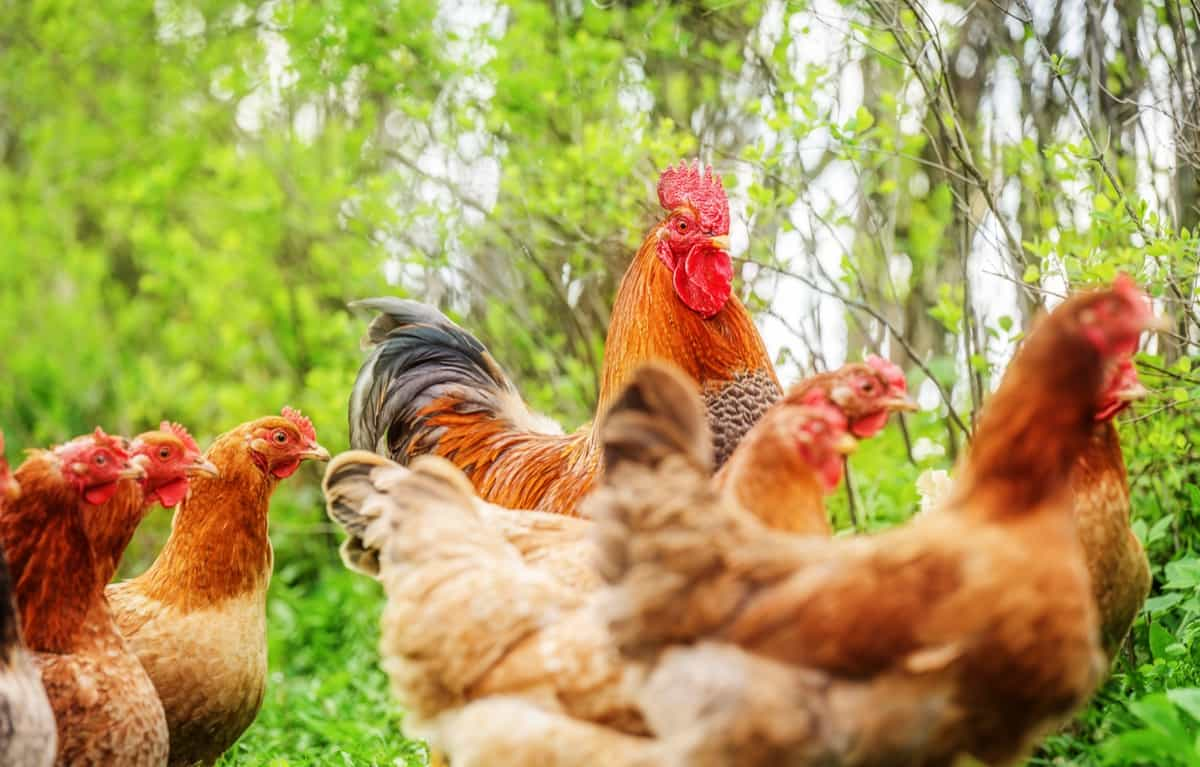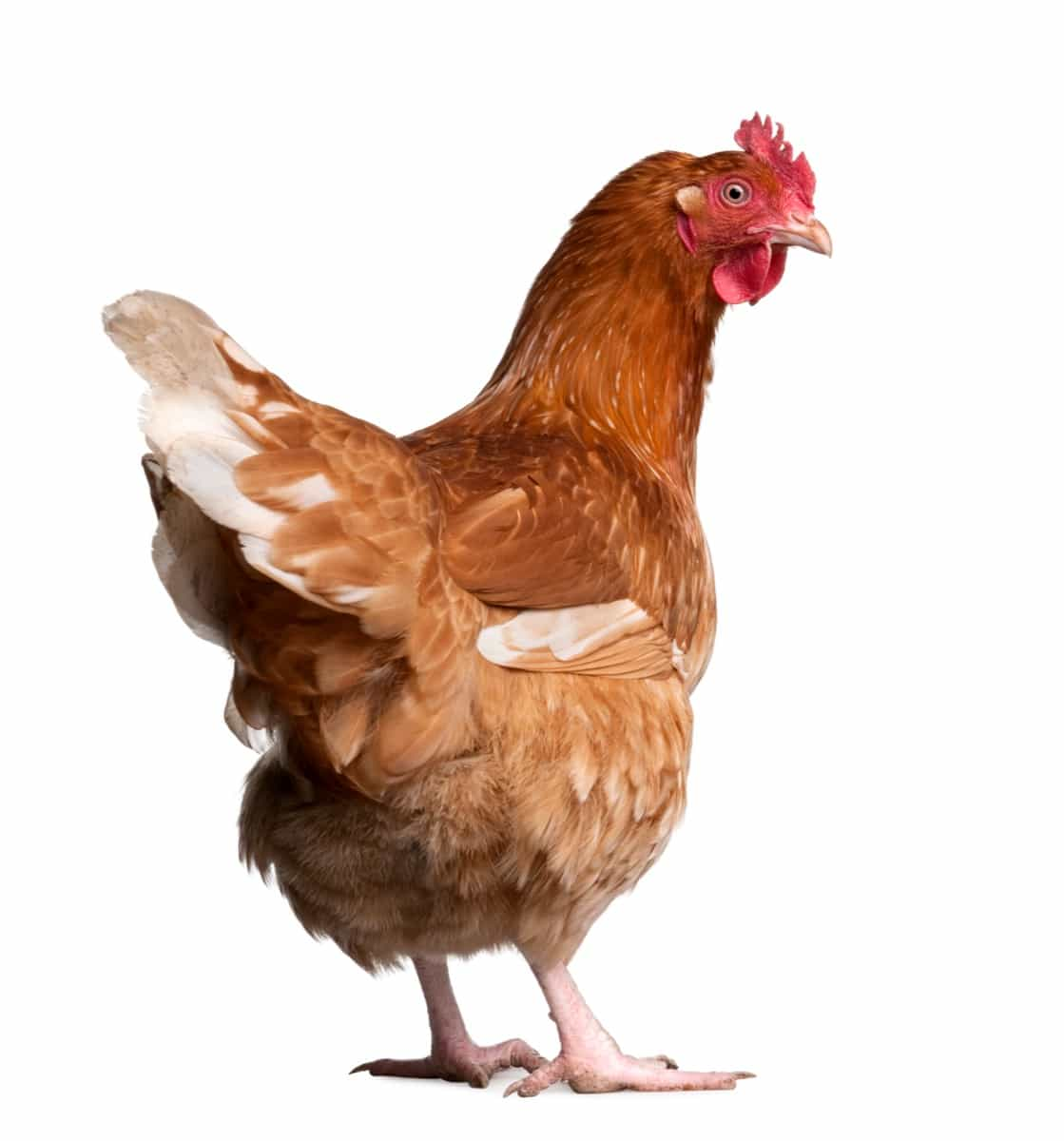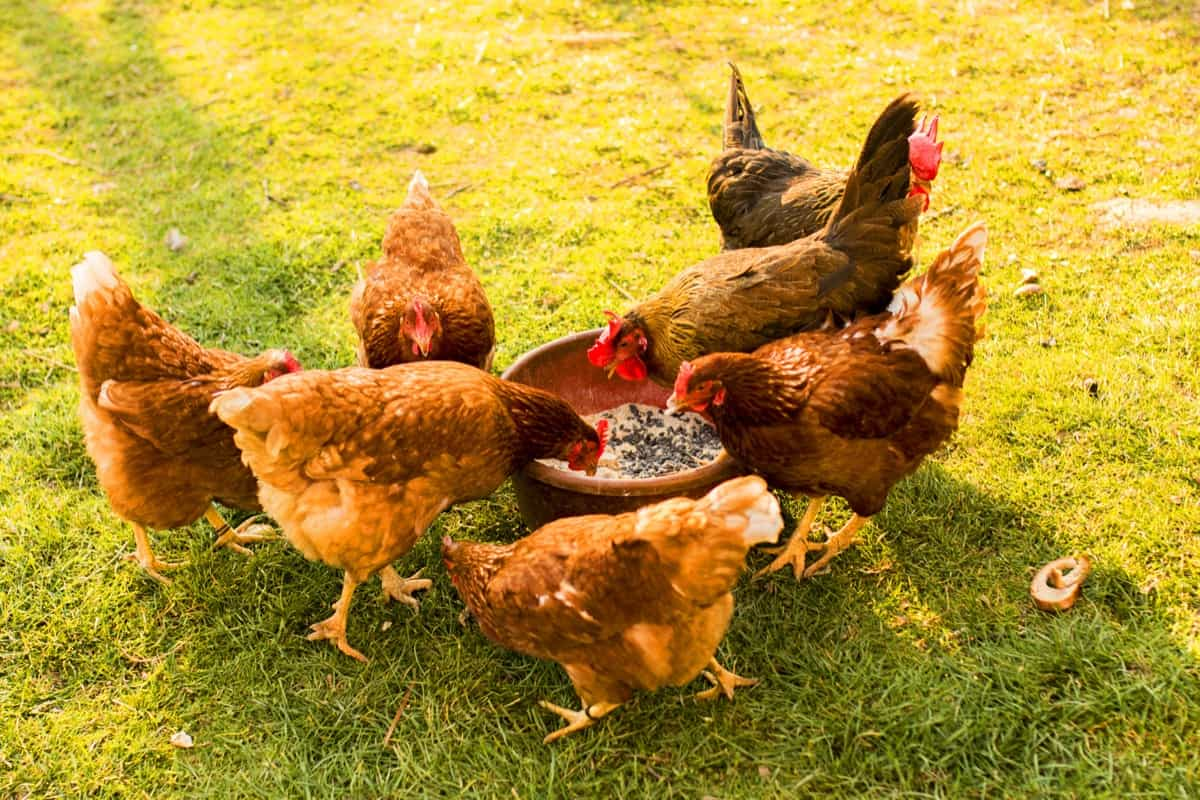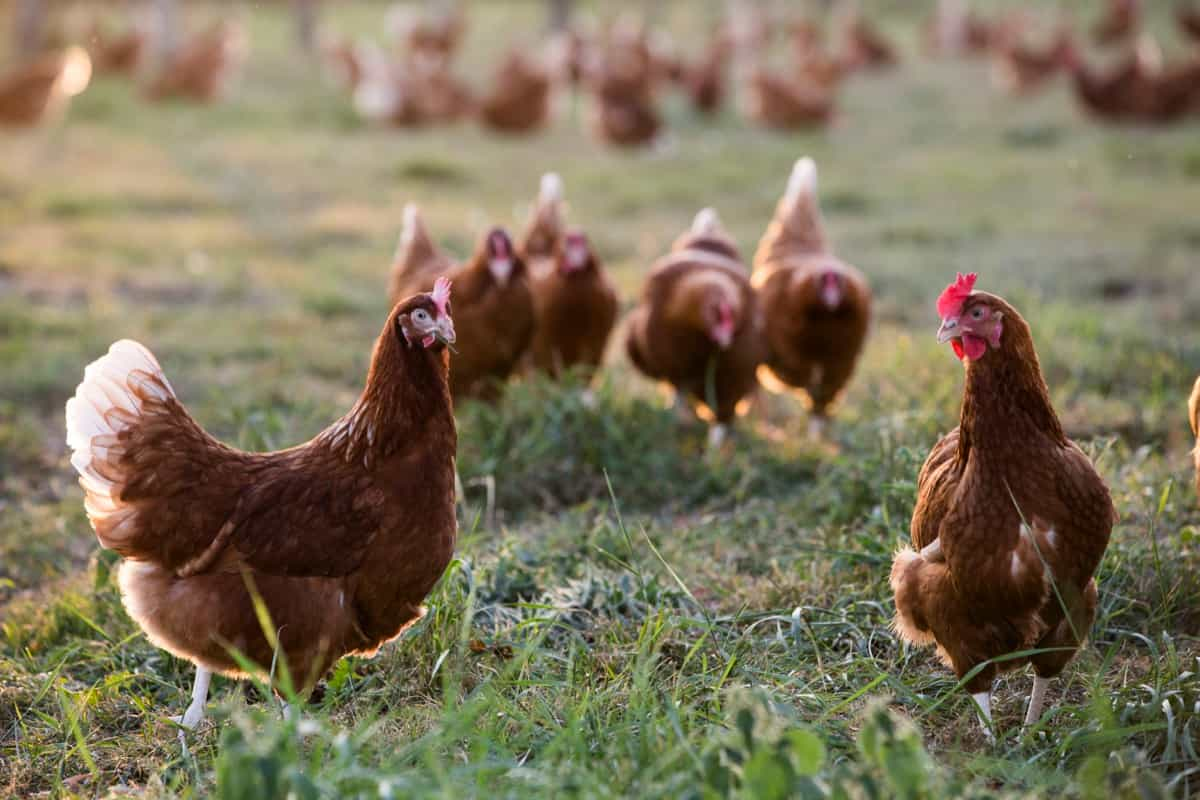Gramapriya chicken breed is a dual-purpose breed developed by the Indian Government’s Poultry Research Station for rural poultry production. This breed is known for its adaptability to various climatic conditions and its high egg and meat production capabilities.

Introduction to Gramapriya Chicken Farming
Significance in Poultry Farming
Gramapriya chickens play a vital role in rural poultry farming due to their ability to thrive in local environments, providing a sustainable source of meat and eggs for small-scale farmers. It contributes to food security and income generation in rural communities.
Gramapriya Chicken Price
The price of 7-10 days-old Gramapriya baby chicken typically ranges between 25-40 rupees per baby chicken. The price will vary based on location, demand, and seller. Generally, these chicks are priced competitively within this range to accommodate different budgets of buyers interested in raising them for meat or egg production.
Gramapriya Breed History and Origin
Development of the Gramapriya Breed
Gramapriya chicken breed was developed by the Poultry Research Station in Hyderabad, India, through selective breeding programs aimed at creating a dual-purpose bird suitable for rural poultry farming. The breeding efforts focused on enhancing traits such as adaptability, egg production, and meat quality, resulting in the creation of the Gramapriya breed.
Geographic Origin and Evolution
The Gramapriya breed originates from India and has evolved through systematic breeding practices over several decades. It was specifically developed to address the needs of rural poultry farmers in various regions of India, where climate and environmental conditions vary significantly.
Gramapriya Chicken Characteristics
- Physical Appearance: Gramapriya chickens typically have a compact body with a slightly elongated neck and a medium-sized single comb. They possess strong legs and are well-adapted to foraging.
- Size and Weight: Mature Gramapriya hens usually weigh around 1.8 to 2.0 kilograms, while cocks weigh around 2.5 to 3.0 kilograms, making them medium-sized dual-purpose birds.
- Feather Color and Pattern: Gramapriya chickens exhibit a variety of feather colors, including brown, black, white, and red, often with distinctive patterns such as mottling or barring.
- Behavioral Traits: Gramapriya chickens are active foragers, exhibiting strong instincts for scavenging and exploring their surroundings for food. They are also known for their hardiness and adaptability to various environmental conditions.
- Gramapriya Chicken Temperament: These chickens are generally docile and easy to handle, making them suitable for backyard or small-scale poultry farming operations.
- Social Behavior: Gramapriya chickens exhibit social behavior within their flock, forming hierarchical structures and establishing pecking orders. They often engage in communal activities such as dust bathing and roosting together, fostering a sense of community within the group.
In case you missed it: Giriraja Chicken: History, Characteristics, Egg Production, Price and Raising

Genetic Profile
Genetic Makeup and Breeding Objectives
The genetic makeup of Gramapriya chicken includes a combination of indigenous Indian chicken varieties bred for specific traits such as high egg production, meat quality, adaptability to local environments, and overall resilience to various diseases and stress factors. Breeding objectives focus on enhancing these traits while maintaining genetic diversity and sustainability.
Adaptations and Resilience
Gramapriya chickens are well-adapted to diverse climatic conditions and environmental factors, making them resilient in varying agricultural landscapes. They possess inherent traits that enable them to withstand challenges such as heat stress, diseases, and limited feed resources commonly encountered in rural poultry farming settings.
Performance and Productivity
Gramapriya Egg Production
Gramapriya hens are prolific layers, capable of producing a significant number of eggs throughout the year under optimal conditions. They exhibit consistent egg production, contributing to a steady supply of eggs for both household consumption and commercial purposes.
Egg Size and Color
The eggs laid by Gramapriya hens typically range in size from medium to large, with a standard egg weight of around 55 to 60 grams. The eggshells can vary in color, including shades of brown, white, or tinted, depending on individual genetic variations.
Laying Capacity
Gramapriya hens have a commendable laying capacity, with an average annual production ranging from 180 to 220 eggs per bird. This high laying capacity makes them economically valuable for both small-scale and commercial poultry operations.
Growth Rate
While Gramapriya chickens are primarily dual-purpose birds, they exhibit moderate growth rates, reaching marketable weight for meat production within a reasonable timeframe. Gramapriya growth rate is optimized to balance meat production with egg-laying capabilities.
Gramapriya Meat Quality
Gramapriya chickens are known for their tender and flavorful meat, making them suitable for both backyard consumption and commercial meat production. Their meat is relatively lean with good texture and taste, contributing to their popularity among consumers seeking high-quality poultry products.
Nutritional Needs
Feeding Requirements
Gramapriya chickens require a balanced diet to support their growth, egg production, and overall health. A combination of commercial poultry feed and locally available feedstuffs such as grains, greens, and kitchen scraps can meet their nutritional needs.
Recommended Diet Composition
A typical Gramapriya chicken diet feed should include a mix of protein sources (such as soybean meal or fish meal), grains (like maize or wheat), vitamins, and minerals. Additionally, providing access to forage and greens can supplement their diet with essential nutrients.
Water and Supplemental Needs
Access to clean, fresh water for Gramapriya chickens to stay hydrated and maintain their health. Additionally, providing supplemental calcium through sources like oyster shells or limestone can support strong eggshell formation in laying hens.
Gramapriya Health Management and Wellness
Common Health Issues and Prevention
Gramapriya chickens, like any poultry breed, are susceptible to various health issues, including respiratory diseases, parasitic infections, and nutritional deficiencies. Preventive measures such as maintaining good hygiene in the coop, providing proper ventilation, regular deworming, and ensuring a balanced diet to mitigate these risks.
Vaccination and Disease Management
Implementing a vaccination schedule recommended by poultry health professionals is essential for disease prevention in Gramapriya chickens. Vaccines against common poultry diseases such as Newcastle disease, infectious bronchitis, and fowl pox can help protect the flock from outbreaks.
Gramapriya Chicken Housing and Environment
Housing Requirements: Gramapriya chickens require adequate housing to protect them from predators and adverse weather conditions and provide a comfortable environment for roosting and nesting.
In case you missed it: Ultimate Guide to Buckeye Chicken: Discover from Raising Facts to Breed Profile

Shelter Design and Space: The shelter for Gramapriya chickens should be well-ventilated, predator-proof, and spacious to accommodate the flock comfortably. Each bird should ideally have 4 to 5 square feet of indoor space, with additional space provided for nesting boxes and perches.
Environmental Considerations: The housing environment should maintain optimal conditions for the health and well-being of Gramapriya chickens. This includes controlling humidity levels, minimizing drafts, and providing adequate lighting for natural behaviors.
Temperature and Ventilation: Maintaining proper temperature and ventilation is crucial for Gramapriya chickens, especially during extreme weather conditions. The coop should be insulated to regulate temperature fluctuations, and adequate ventilation should be provided to prevent moisture buildup and ensure fresh air circulation.
Raising Facts and Best Practices
Starting with Gramapriya Chickens: When starting with Gramapriya chickens, it’s essential to source healthy chicks from reputable breeders or hatcheries. Prepare the housing and environment beforehand, ensuring all necessary equipment and supplies are readily available.
Brooding and Early Care: During the brooding phase, provide a warm, draft-free environment with access to chick starter feed and fresh water. Monitor chicks closely for signs of illness or distress and adjust temperature and humidity levels as needed.
Managing Adult Chickens: As Gramapriya chickens mature, they continue to provide a balanced diet and, clean, fresh water, and appropriate housing conditions. Monitor flock dynamics and intervene if aggressive behavior or pecking issues arise.
Daily Care and Maintenance: Daily Gramapriya chicken care for Gramapriya chickens includes feeding, watering, egg collection, and cleaning of the coop and nesting areas. Regularly inspect birds for signs of illness or injury and address any health issues promptly. Implement biosecurity measures to avoid the spread of diseases within the flock.
In case you missed it: Bionda Piemontese Chicken Facts: Ultimate Guide Breeding, Raising and Care

Conclusion
The Gramapriya chicken breed, developed in India, embodies a rich history of selective breeding aimed at creating a resilient dual-purpose bird. Its adaptability, prolific egg-laying capabilities, and flavorful meat make raising Gramapriya chickens a valuable asset for rural poultry farmers for sustainable Gramapriya chicken farming.
- Feed Your Flock for Less: Top 10 Tips to Save on Chicken Feed
- Ultimate Guide to Ossabaw Island Hog: Breeding, Raising, Diet, and Care
- Hatching Answers: The Top 10 Reasons Your Chickens Aren’t Laying Eggs
- Eggs and Economics: Breaking Down the Cost of Raising Backyard Chickens
- Defend Your Greens: Proven Methods to Keep Iguanas Out of Your Garden
- Ultimate Guide to Cinnamon Queen Chicken: A Comprehensive Guide for Beginners
- Ultimate Guide to California Tan Chicken: Breeding, Raising, Diet, Egg-Production and Care
- Ultimate Guide to Marsh Daisy Chicken: Breeding, Raising, Diet, and Care
- 10 Types of Chicken Farming Businesses You Can Start for Profits